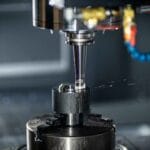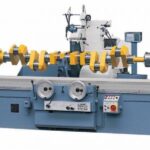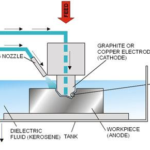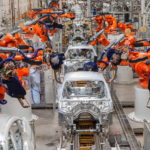These days, automation is helping many business owners achieve a new range of possibilities, improving efficiency and allowing them to compete with large corporations on a new scale and with new confidence. One of the most important automation tools today is what’s known as “computer numerical control” or CNC for short.
CNC machining is the process of rendering complicated tasks simple and quick by installing software which dictates the movement of factory machines. CNC machining allows for the control and easy use of incredibly complex machinery, such as lathes, mills, grinders, and routers. This is incredible technology because those engaging in the use of CNC machining need far less manual help than they normally would. What sets CNC apart from other forms of computing and computation is its software programs and consoles.

How Does CNC Machining Work?
CNC works mainly through the software used for the process. People can code specific “cuts” into the software and once activated, the software will dictate to the machine when, where, and how to make its cuts or perform some other function. Although CNC saves time and money in the long run, CNC programs will not always run perfectly.
There are errors that can arise in the machines which will result in improper cuts, and these errors are prone to increase when the machine needs to cut in two directions at once. The directions for the machine are input through the use of a small computer; the commands are stored in the computer’s memory so they can be accessed again later if need be.
Programmers are responsible for writing all of the necessary code for these machines, meaning CNC programs are extremely expansive and can be revised and edited as need be. Programmers can even edit existing code to add new commands and inputs throughout the lifespan of CNC machinery.
Programming a CNC Machine
The “language” of CNC programming is known as “G-code” and is operated via numerical control. Separate software programs will be designated to control certain objects depending on the needs of those using the machines. The G-code is expansive and thorough, used to control many different components of one machine. For example, the code is used to control speed, feed rate, and coordination, among other functions.
All of this means that a machine’s speed and control can be carefully pre-programmed so that the machine behaves exactly as the programmer intends. This makes machines predictable and self-sufficient, capable of running without human input and saving tens to hundreds of thousands of dollars in the long run.
CNC machinery computing has been adopted across many manufacturing plants across the nation because of its ease of use and cost savings. In particular, many metal fabricators and producers of plastic products are adopting technology at an incredibly rapid pace.
Also Read:
- How Electron Beam Machining Process Works?
- What is Electrical Discharge Machining (EDM) Process and How it Works?
- Water Jet Machining – Working Principle, Advantages and Disadvantages with Application
Types of CNC Machines
Although modern advancements have accelerated CNC machine use and capabilities to an unprecedented degree, the earliest CNC machines were actually available during the 1940s and used when motors could control the movement of certain tools. Analog then digital technology has hastened this process, and now nearly all CNC machines are electronic.
The most common types of these machines are used in fields such as ultrasonic welding, hole-punching, and laser cutting. There are also different types of CNC machines, such as CNC mills, lathes, and plasma cutters. Mills run programs that employ either numbers and letters and can also run off of G-code.
Lathes use CNC technology to cut cloth in a circular pattern at a highly accurate and blisteringly quick clip. The precision and speed CNC represents makes the process much easier. Plasma Cutters use CNC technology for safety and speed reasons. Plasma cutters employ intense heat using a torch which can cut materials made from metal and other difficult components.
Additional Uses
CNC computing is used in a number of other machines which require precision and speed to be as effective and efficient as possible. In addition to being used in mills, lathes, and plasma cutters, CNC machines are being employed in embroidery machines, wood routers, turret punchers, foam cutters, 3D printers, glass cutters, and cylindrical grinders. Any machine which relies on a tedious, methodical, and the highly repetitive process can be aided by the use of CNC computing.
Many of these machines need to make cuts at complex angles and on materials which are not easily cut. With the right code, and programmers who know what they’re doing and why, the variables present in the use of these machines quickly disappear, replaced by a perfect cut with little human effort.
Final Thoughts on CNC Machines
CNC machinery is the wave of the future in terms of manufacturing and achieving a great cut with little time or cost spending. The programming associated with CNC allows for machines to behave in a predictable and highly functional manner, eliminating the need for human effort and helping achieve a substantially higher bottom line for manufacturing companies, on top of reducing risk associated with the cutting process. Although these machines need to be programmed correctly, their programming can be easily edited and refined over the course of a few days.








